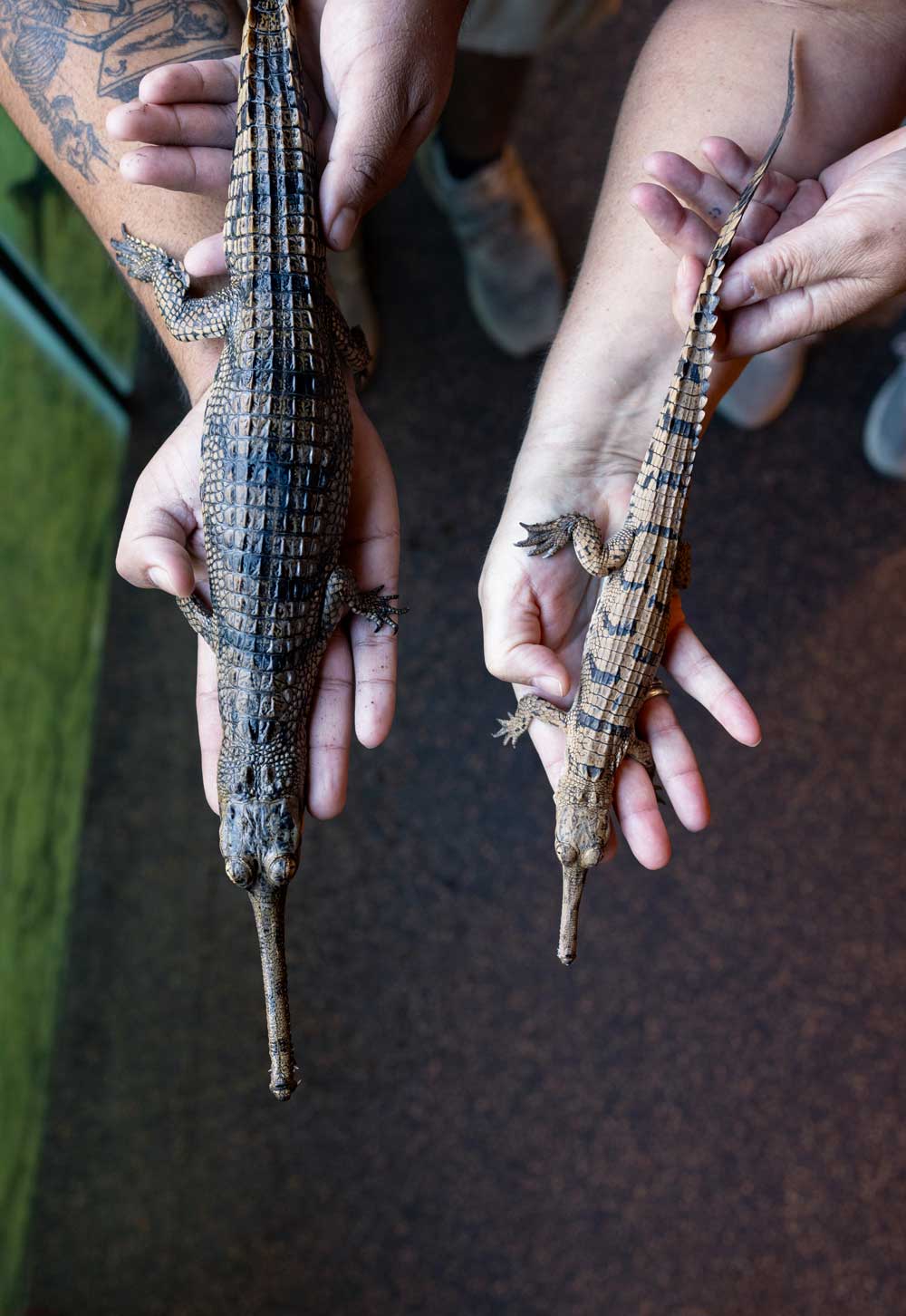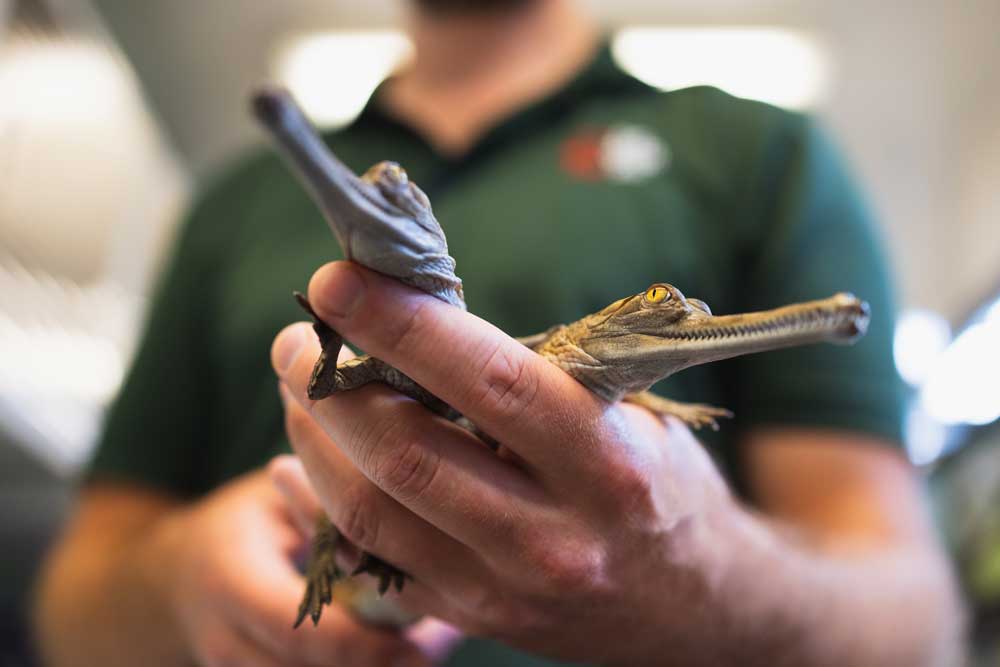The zoo is the only North American institution to have produced multiple gharial offspring two different times.
The Fort Worth Zoo announced that it has successfully hatched out two gharials (Gavialis gangeticus), one June 16 and the other June 22. In the Summer of 2023, the zoo successfully hatched four gharials, the first time the zoo hatched out the species. The zoo is the only North American institution to have produced multiple gharial offspring two different times. The two offspring were hatched from different females in the zoo’s breeding group. This is important for diversifying the gene pool of this critically endangered species.

The hatchlings are about a foot long when they come out. Photo by Fort Worth Zoo.
“Everyone here at the Fort Worth Zoo is ecstatic to have repeated success with our gharial hatchings for the second year in a row,” Vicky Poole, associate curator of ectotherms said in a statement released to the media. “Having two additional hatchlings is a big win for growing the gharial population in zoos and expanding knowledge to help this critically endangered species survive.”
Gharial Conservation in Northern India
Where Gharials Live
There are about 40 gharials in captivity in North American zoos and an estimated 200 to 500 adults living in the wild in Asia. They are traditionally found in the northern Indian subcontinent, including Pakistan and India, and Nepal, Bangladesh and Myanmar. Some of the waterways in which they are traditionally found include the Indus River, the Ganges River in India, the Brahmaputra River that runs through India and Bangladesh, and Myanmar’s Irrawaddy River. Surveys in 2008 and 2009 however, found no gharials in the Indus River. It is locally extinct in Bhutan, Myanmar and Pakistan.

In 2019, about 100 gharial hatchlings were found in Nepal’s Bardia National Park. This was the first time in 37 years that the reptile was observed successfully breeding. The IUCN SSC Crocodile Specialist Group published the findings of the ZSL’s EDGE (Evolutionary Distinct and Globally Endangered) of Existence conservation initiative back in 2019. The groups estimated at the time that less than 100 adults were left in Nepal. Several fragmented populations in India are thought to exist. It is believed that there are no gharials remaining across the species’ former range.
About Gharials
Female gharials grow to about 8 to 10 feet in length. Males can reach up to about 16 feet in length. They feed on fish, insects, fish, frogs, crustaceans. The snout of the gharial is narrow and long and is adapted to capturing and eating fish. It is also commonly called the gavial or fish eating crocodile.


